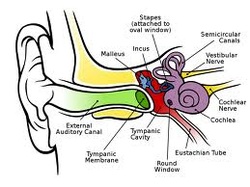PHONETICS AND ITS BRANCHES
The main branches of phonetics are the following:
1) Articulatory phonetics
The organs involved in the production of sounds: the speech apparatus.
The air stream, which comes from the lungs, undergoes a series of transformations when it passes through the speech apparatus and becomes sound. The set of organs involved in phonation are:
Respiratory organ or infraglottic cavities: they are formed by the organs that function in respiration:
Lungs, bromchiae, trachea. The lungs perform two movements: inspiration and expiration. The air contained in the lungs reaches the bronchi and from there to the trachea.
Speaking organ or laryngeal cavity:
The larynx is made up of four cartilages: cricoid, thyroid, and two arytenoids. The action of the vocal cords produce the 1st classification of articulated sounds:
If the vocal cords vibrate: the sound is loud
If the vocal cords do not vibrate: the sound is muffled
Supraglottic cavities:
As the air stream passes through the larynx it reaches the pharynx where another division of sounds is made according to the action of the soft palate.
-Articulated sounds: oral
-Consonant sounds: nasal
-Vowel sounds: nasal
It is the study of phonetics from the point of view of sound waves. It deals with the scientific measurement of the sound waves that are created in the air when we speak. Just as we attribute articulatory features to phonemes, we can attribute acoustic features to sounds: vowel / non-vowel and consonant / non-consonant, compact / diffuse voiced / deaf, nasal / oral, interrupted / continuous, strident / matte, severe / sharp. These measurements are reflected in spectrograms, in which the different formants into which the sounds are decomposed are reflected.
3) Auditory phonetics
consider phonetics from the point of view of the listener (receiver). Hearing begins in the ear and ends in the brain.
- Hearing aid
WEBSITES




No hay comentarios:
Publicar un comentario